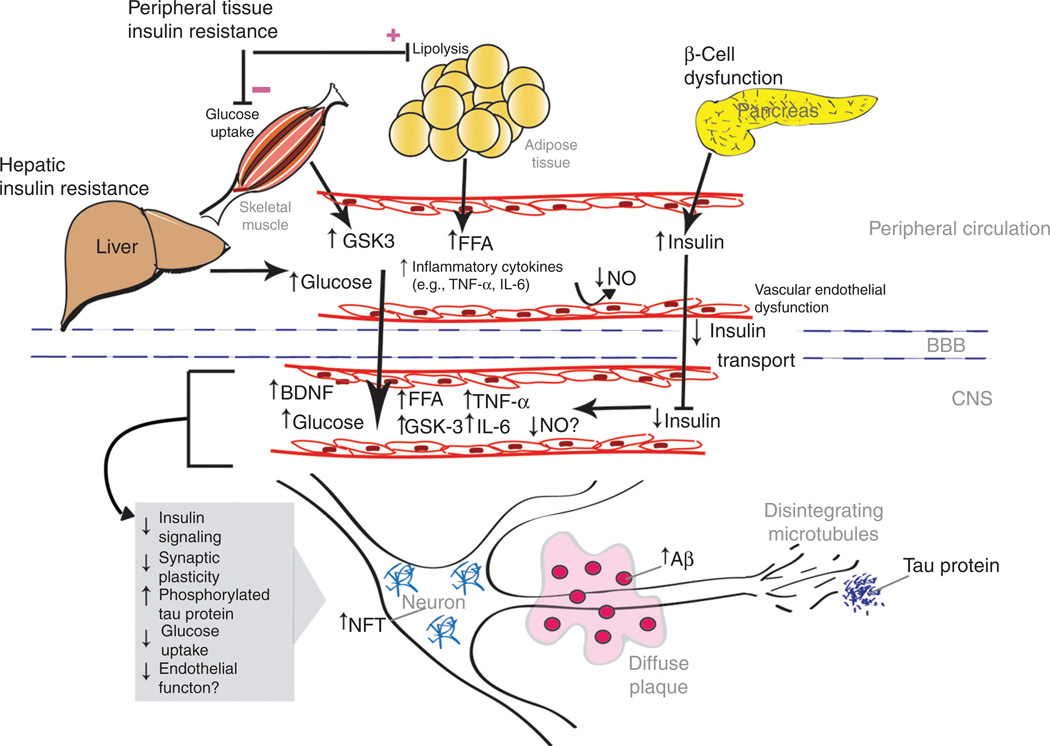Figure 1.
Peripheral disorders on the spectrum of obesity, insulin resistance, and hyperinsulinemia may promote a state of central insulin deficiency and resistance that contributes to the development and progression of cognitive impairment and Alzheimer’s disease through multiple potential mechanisms. Prolonged peripheral hyperinsulinemia decreases insulin transport into the CNS, which may result in central insulin deficiency, resistance, and impaired signaling. These abnormalities may have diverse effects including decreased glucose metabolism and synaptic plasticity, as well as accumulation of Aβ and NFT that characterize Alzheimer’s disease. Decreased availability of NO may both impair synaptic plasticity and promote endothelial dysfunction. Known peripheral effects of obesity, insulin resistance and hyperinsulinemia, including endothelial dysfunction and elevations of FFA, TNF-α, and GSK-3, may extend to the CNS. FFA and TNF-α may promote intracranial endothelial dysfunction and stimulate accumulation of Aβ and NFT. Aβ, β-amyloid; BBB, blood–brain barrier; BDNF, brain-derived neurotrophic factor; CNS, central nervous system; FFA, free fatty acids; GSK-3, glycogen synthase kinase-3; IL-6, interleukin-6; NFT, neurofibrillary tangles; NO, nitric oxide; TNF-α, tumor necrosis factor-α.

